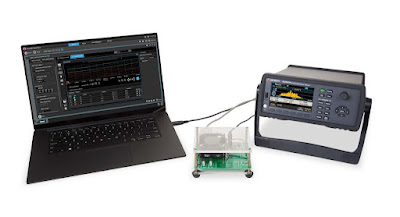In the rapidly evolving landscape of technology, the Internet of Things (IoT) stands out as a transformative force, enabling the connection and interaction of everyday devices. At the heart of IoT lies data—the raw material that fuels insights, efficiencies, and innovation.
Data acquisition forms the foundation of this ecosystem, facilitating the collection of information from diverse sources. In this blog, we delve into the significance of data acquisition in IoT and explore how it empowers businesses and industries.
Understanding Data Acquisition in IoT
Data acquisition in IoT refers to the process of gathering data from sensors, devices, and other connected endpoints. These endpoints can range from smart thermostats and wearable fitness trackers to industrial machinery embedded with sensors. The data collected may include temperature readings, location coordinates, machine performance metrics, or even consumer behavior patterns.
The key components of data acquisition in IoT include sensors, actuators, communication protocols, and data processing systems. Sensors play a crucial role by detecting changes in the physical environment and converting them into electrical signals.

Importance of Real-time Data
One of the defining characteristics of IoT is its ability to generate real-time data. This continuous stream of information enables businesses to monitor operations instantaneously, detect anomalies promptly, and respond in a timely manner. For instance, in smart manufacturing, real-time data from production lines can optimise workflows, predict maintenance needs, and ensure quality control.
Moreover, real-time data acquisition opens doors to dynamic applications such as remote patient monitoring in healthcare, predictive maintenance in utilities, and personalised recommendations in retail. By harnessing this data promptly, organisations can unlock efficiencies and deliver enhanced experiences to customers.
Challenges in Data Acquisition
Despite its immense potential, data acquisition in IoT presents several challenges. One primary concern is the sheer volume of data generated. With millions of connected devices constantly transmitting information, managing and processing this data efficiently becomes paramount. Additionally, ensuring data security and privacy poses significant hurdles, especially in sensitive domains like healthcare and finance.
Interoperability among diverse IoT devices and platforms is another challenge. Standardisation of communication protocols and data formats is essential to enable seamless data exchange and integration across heterogeneous systems. Overcoming these challenges requires robust infrastructure, advanced analytics capabilities, and stringent cybersecurity measures.
Enhancing Decision-making with Data Analytics
The true value of data acquisition in IoT emerges through advanced analytics and insights. By leveraging techniques such as machine learning and predictive analytics, organisations can derive actionable intelligence from raw data. These insights empower businesses to optimise processes, anticipate market trends, and make informed decisions.
For example, in agriculture, IoT-enabled sensors can collect data on soil moisture, weather conditions, and crop health. By applying analytics to this data, farmers can optimise irrigation schedules, minimise resource wastage, and maximise yields. Similarly, in transportation, real-time traffic data collected from connected vehicles can optimise route planning and reduce congestion.
Future Trends and Innovations
Looking ahead, data acquisition in IoT is poised for exponential growth and innovation. Edge computing—a paradigm where data processing occurs closer to the data source—promises to address latency issues and reduce bandwidth requirements. This approach is particularly beneficial for applications requiring real-time responsiveness, such as autonomous vehicles and augmented reality.
Furthermore, the convergence of IoT with emerging technologies like 5G networks and artificial intelligence will unlock new possibilities. 5G's high-speed, low-latency connectivity will enhance IoT deployments, enabling massive data transfer and seamless connectivity across devices. AI algorithms will continue to refine data analytics, enabling more accurate predictions and prescriptive actions.
Conclusion
Data acquisition forms the backbone of IoT, enabling the transformation of industries and daily life. By harnessing the power of connected devices and leveraging data intelligently, businesses can drive innovation, enhance operational efficiency, and deliver unparalleled value to customers.
As IoT continues to evolve, the synergy between data acquisition, analytics, and emerging technologies will redefine the possibilities of a connected world.
Source by :- Data Acquisition in IoT

No comments yet